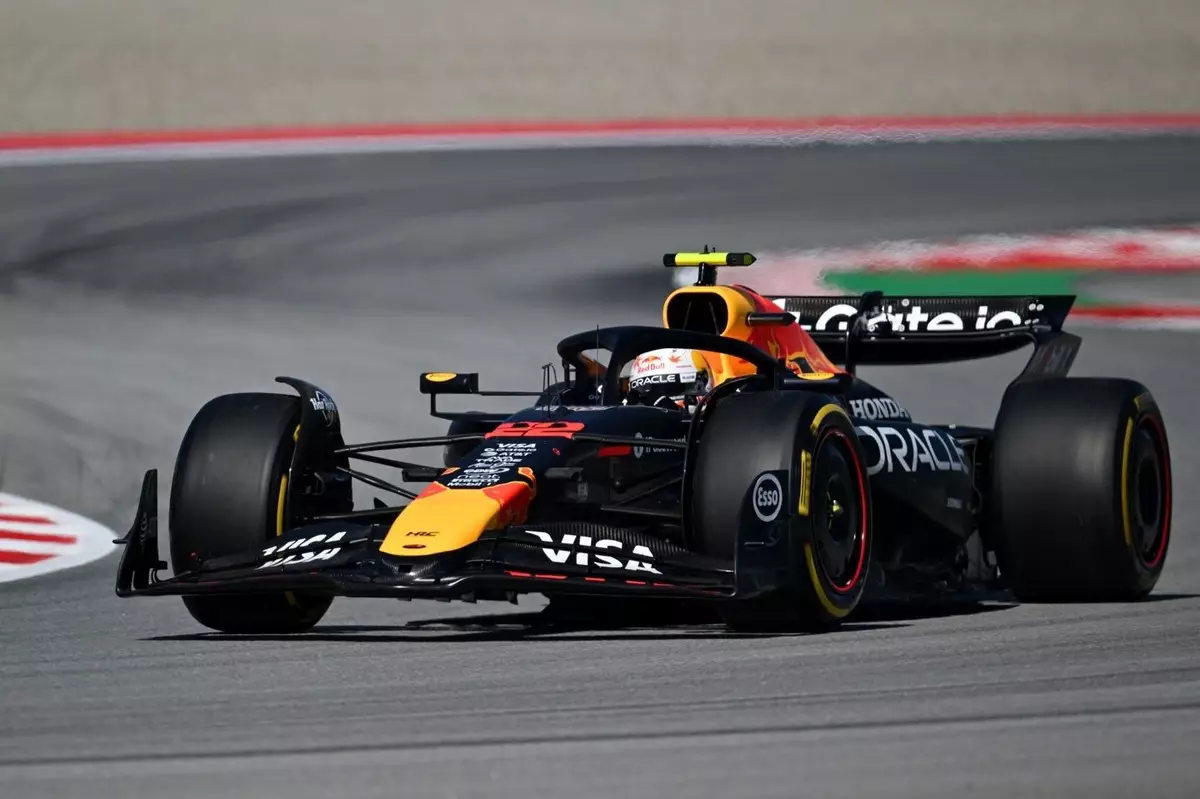During the opening practice sessions for the Spanish Grand Prix, Yuki Tsunoda found himself grappling with an enigma: a noticeable lack of speed that left him baffled. Despite completing smooth sessions without any visible issues impacting his performance, Tsunoda publicly expressed his confusion regarding his slower lap times. The Red Bull driver was clearly frustrated, stating, “I don’t have any idea why I’m slow.” This statement underlines a critical aspect of motorsports—drivers are often enveloped in layers of technical understanding, making any lapse in performance feel like a puzzle without a clear solution.
Tsunoda’s performance metrics were striking; he clocked in six tenths slower than his teammate, Max Verstappen, during qualifying simulations using soft tires. Comparing lap times offers a glimpse into the driver’s difficulties, but Tsunoda took it a step further by critiquing the vehicle’s handling through team radio. The mention of sliding at both axles indicates a fundamental issue with car setup or tire management that transcends mere driving ability.
Analyzing the Data: Where the Shortfall Lies
The post-session analysis illuminated a critical gap in speed that Tsunoda exhibited particularly in turns 9 and 10, where GPS data showed that he lacked the carrying speed that Verstappen easily maintained. In critical racing instances, like these practice sessions, such discrepancies can spell disaster once the race begins. This situation emphasizes an often-overlooked aspect of Formula 1: that success isn’t just a product of individual talent but a harmonious relationship between driver input and vehicle performance.
While Tsunoda focused on his individual experience during the practice, it is essential to recognize that F1 is a team sport where the symbiosis between driver and engineer is paramount. Without this connection, especially in high-stakes environments like practice sessions, issues tend to magnify. Tsunoda’s admission of an otherwise smooth day underscores the mysterious complexity of racing, where the most subtle factors can dramatically influence performance outputs.
Max Verstappen: A Different Perspective Amidst the Atmosphere
In stark contrast to Tsunoda’s struggles, Max Verstappen reflected on what he labeled an “OK” Friday of practice. Acknowledging a slight uptick in performance relative to previous Fridays this season, he expressed cautious optimism. Yet, Verstappen’s willingness to demand more from his machinery illustrates an essential characteristic of elite drivers: an unrelenting drive for perfection.
Verstappen mentioned that, despite improved sensations while driving, he wasn’t fully satisfied and longed for an enhanced connection with the car to mirror the comfort he found at circuits like Imola. The dichotomy of his experiences compared to Tsunoda emphasizes that the psychological element of racing is just as vital as raw speed. This is especially critical in a sport defined by microseconds—where one’s mental fortitude can often lead to defining moments in races.
Furthermore, the pressing heat conditions at the track not only influence vehicle performance but require significant physical and mental stamina. Driving in such high-temperature conditions can lead to rapid tire degradation and challenges in heat management that can further complicate a driver’s performance objectives.
Turning the Tide: Hopes for a Breakthrough
For Yuki Tsunoda, the night following practice promises to be a lengthy one, filled with both reflection and hope. He articulated his desire to uncover the reasons behind his performance deficit, indicating a proactive attitude that underscores the inherent challenge within Formula 1 racing: the relentless pursuit of improvement. As he noted, “I hope we can find something; otherwise, it’s really tough.” This sentiment illustrates the critical importance of teamwork in a sport that blends speed with strategy and technical precision.
Tsunoda’s candid acknowledgment of frustration is particularly resonant in high-performance environments. It reminds observers that even the best drivers face hurdles that go beyond simple mistakes. His journey toward finding speed encapsulates the trials and tribulations of many, underscoring the notion that each race weekend is a new opportunity for drivers to either falter or flourish. The anticipation of improvement not only shapes his immediate future but serves as a crucial reminder of the relentless grind that embodies the spirit of Formula 1.


Leave a Reply